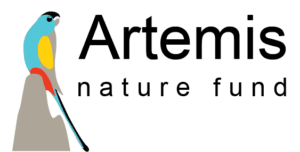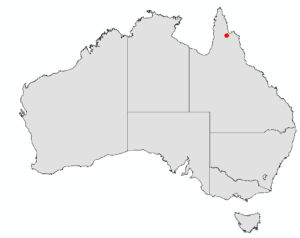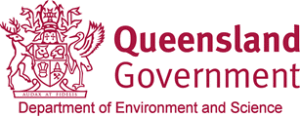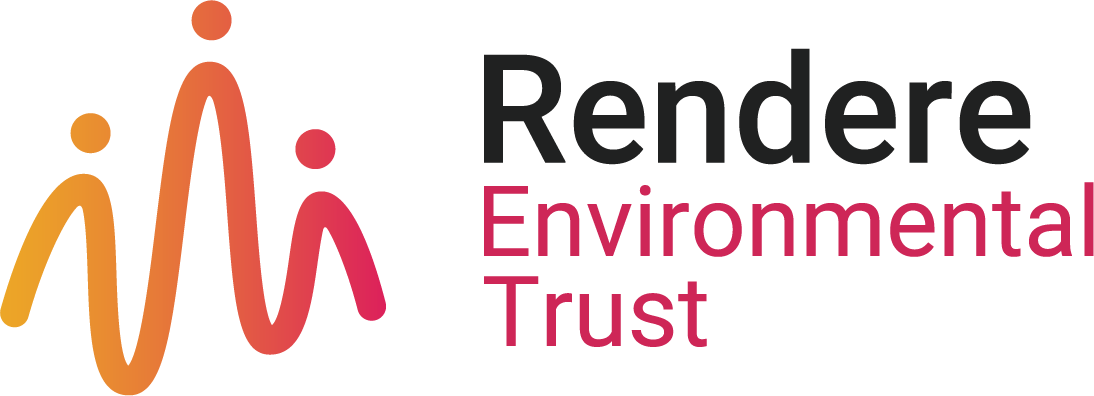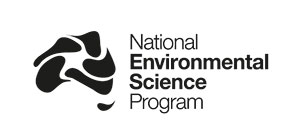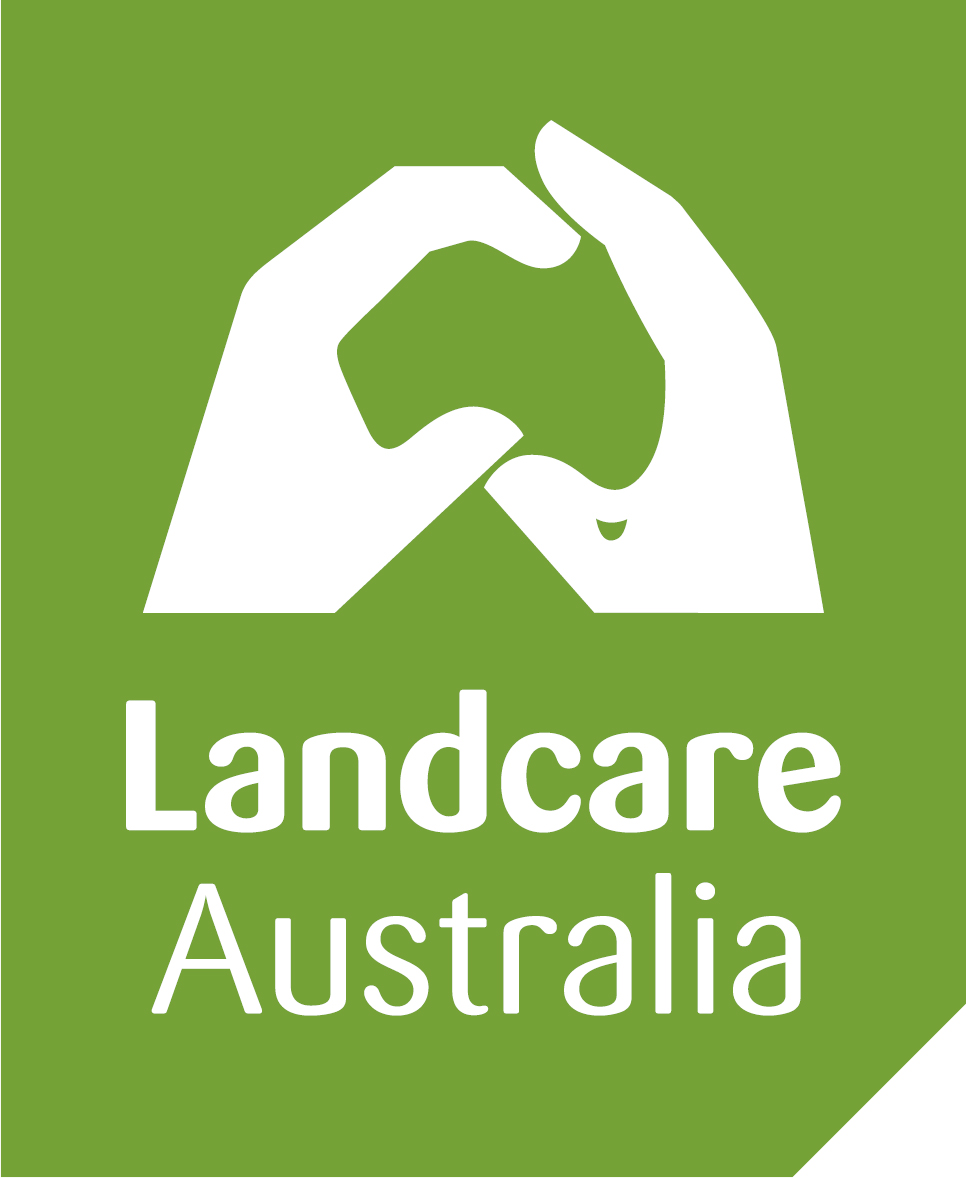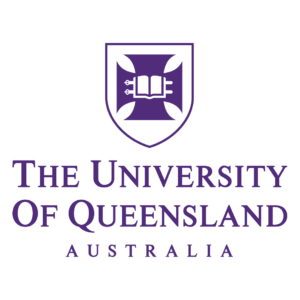MONITORING PARROT SURVIVAL
Our main goal on Artemis is to recover the population of Golden-shouldered Parrots (GSPs). We want to see more parrots back in the places they were 20 years ago.
Everything we are doing on Artemis relating to habitat restoration, predator control, feral pig control and supplementary feeding is being done to grow the population of GSPs. All combined, it’s a lot of work, costing a lot of money, and there is a lot riding on it. We’ve already lost the closely-related Paradise Parrot to extinction. We don’t want to repeat that horrible mistake with GSPs.

Paradise Parrot. Copyright W.T Cooper, with permission.
It boils down to survival: we are doing whatever it takes to increase the lifespan of GSPs. And to make sure we’re doing the right things in the right way, we are following the fate of individuals using colour-banding.
Parrot banding video. Video curated by Braydon Moloney.
COLOUR BANDING
Colour-banding is a standard practice in ornithology and aviculture. It involves first capturing birds in mist-nets and fitting them with combinations of small coloured leg rings so they are individually recognisable. Understandably, mist netting and banding requires several permits and a licence from state and federal authorities, plus sign-off from an animal ethics committee.
Colour-banded parrots are monitored closely using cameras as they visit supplementary feeding stations. The automatic cameras we are currently using capture all the comings and goings by all species that visit the feeder, resulting in hundreds of thousands of photos.
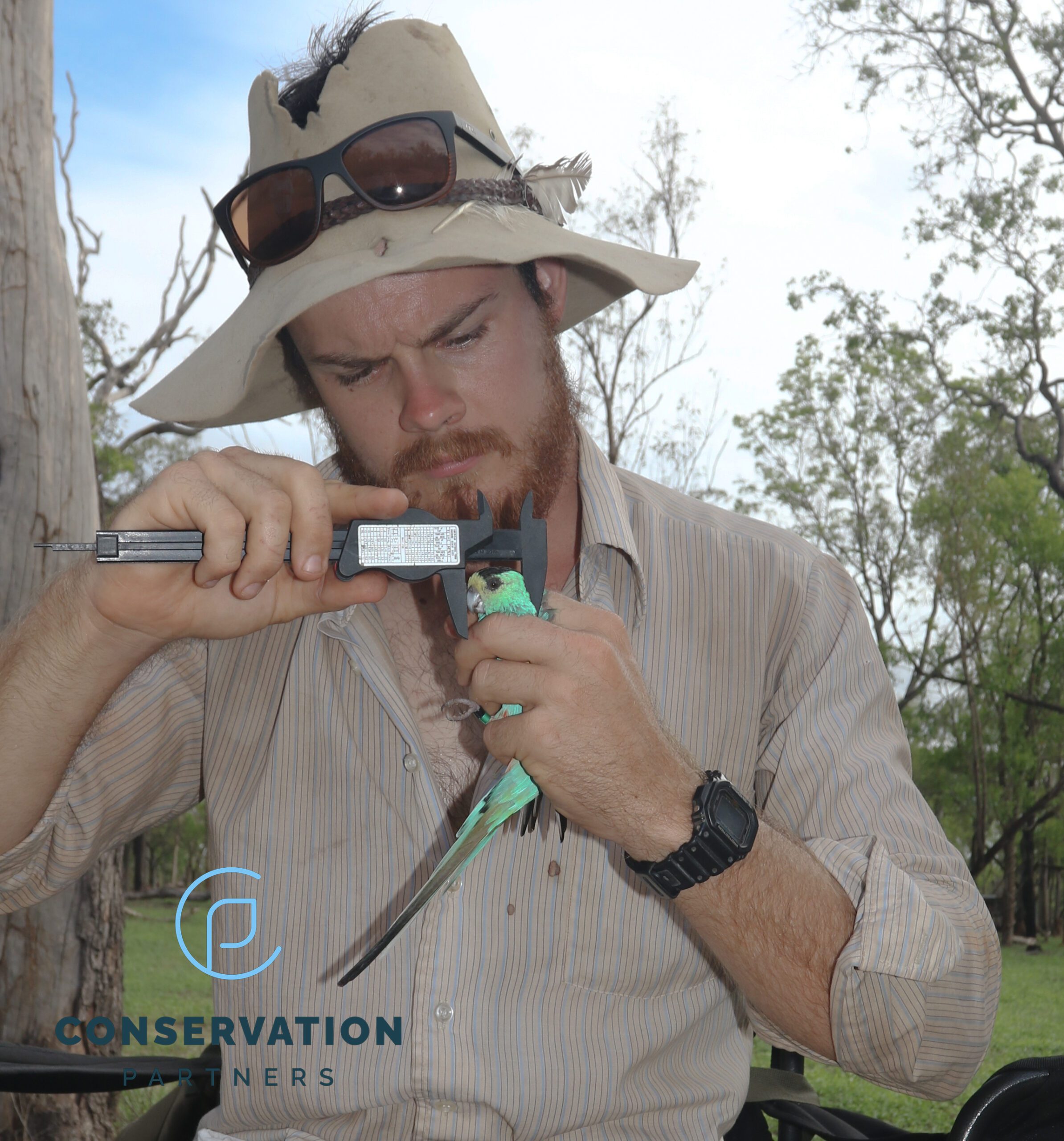

Patrick Webster colour-banded a GSP and this bird is later looking out of its nest. Colour-banding assists in identification.
We are using artificial intelligence to identify which photos contain parrots, which helps filter out the myriad of finches, doves and anything else that visits or walks past the feeders. We then manually review the remaining images to identify who’s been snapped by the camera.
So far, we have analysed a subset of photos from the early period (2019-2021) when we were still figuring out the best way to restore habitats, control predators and protect nests. We are treating this period as “pre-management”, when our actions weren’t yet imparting a significantly large effect on predation rates. This pre-management baseline is providing critical information about parrot survival rates. We have learnt, for example, that females live much shorter lives than males. This fits with what we know about their biology - females do most of the nest excavating and incubating, which puts them at greater risk of predation.
Between July 2022 and now, we have restored > 60 hectares of habitat which should reduce predation. Over the next six months, we will start looking at post management survival rates and compare them against the baseline data to assess how we are tracking towards our goal of restoring the Artemis parrot population.
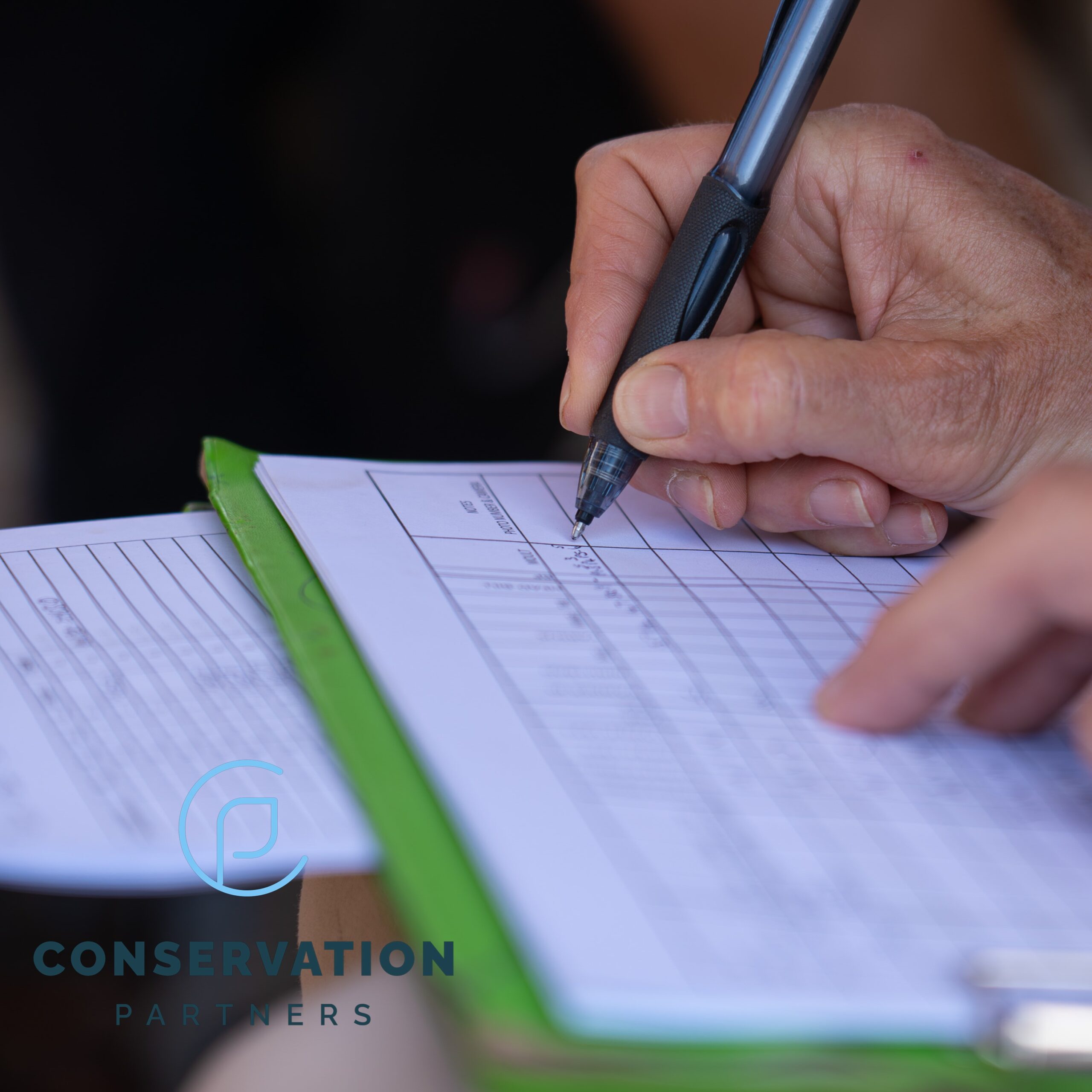
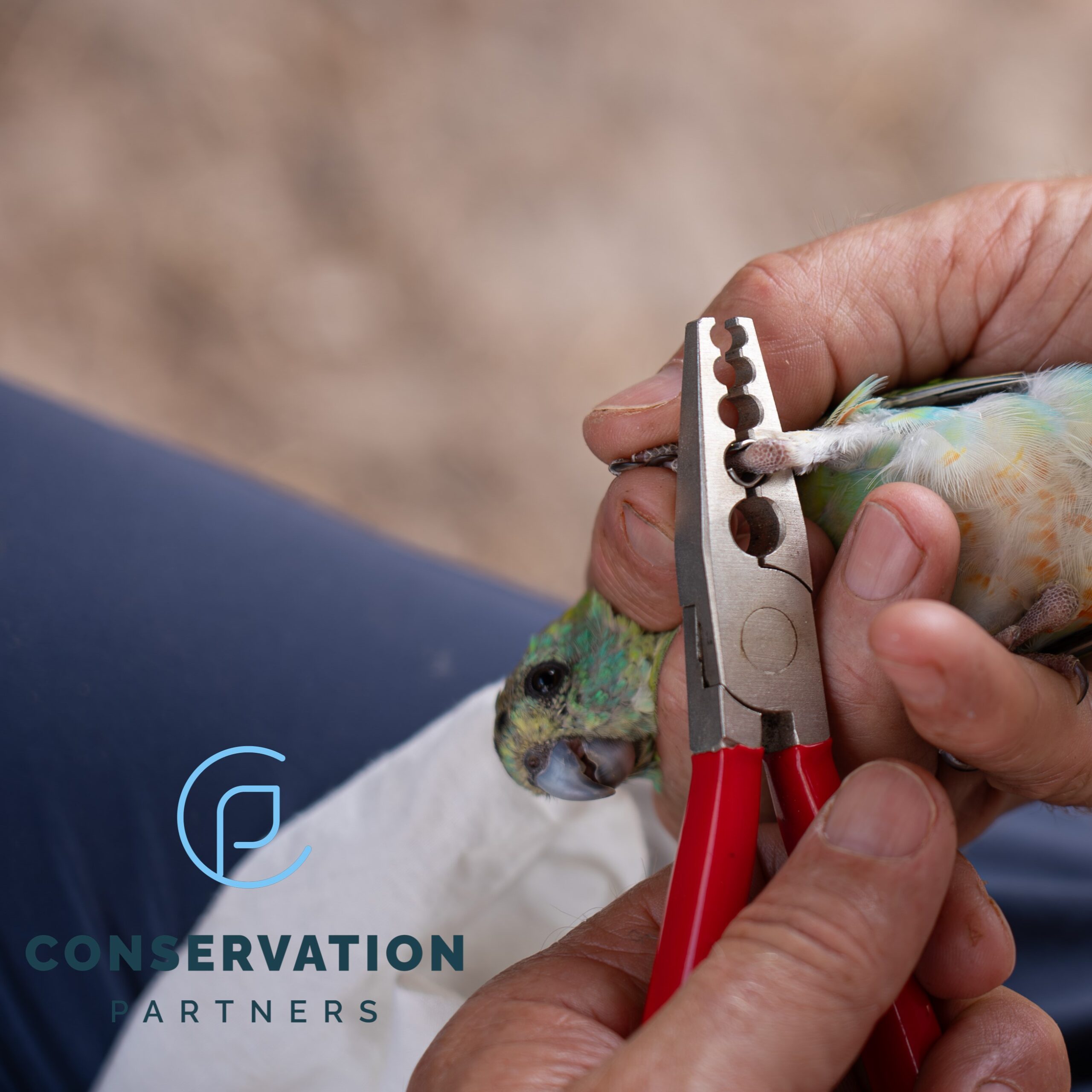
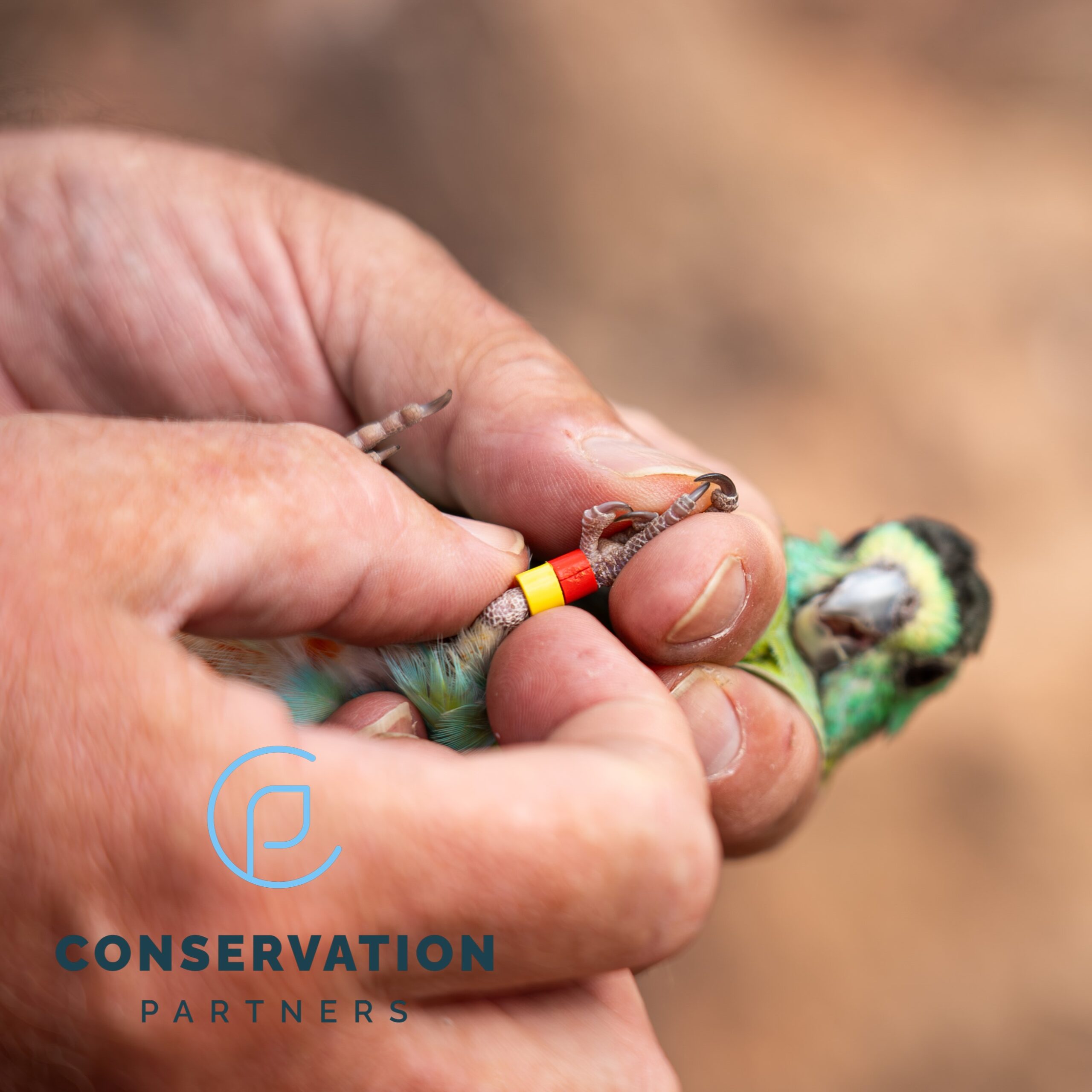
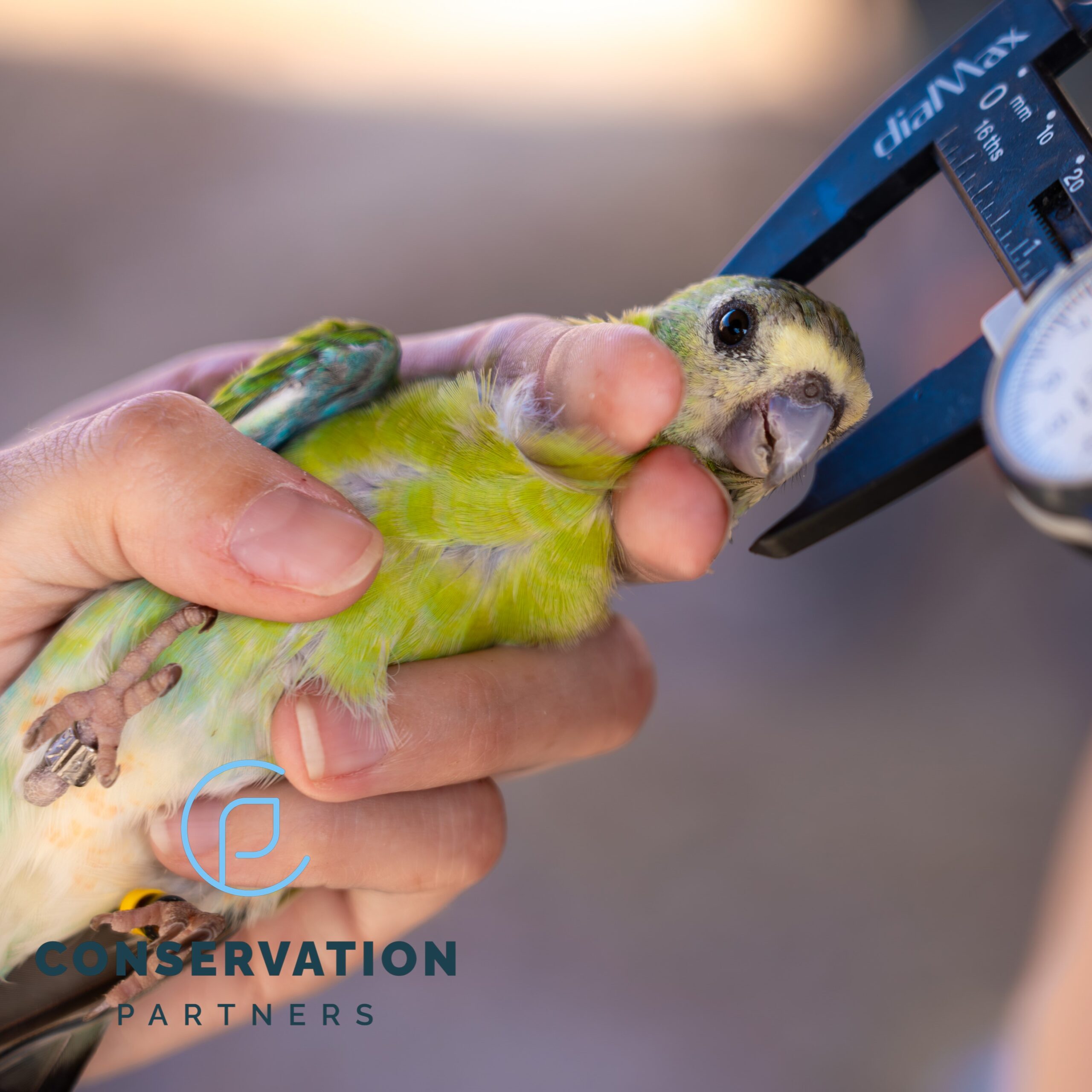
A group of volunteers from Queensland Bird Research and Banding Group (QBRBG) visited Artemis in November 2023. Together, we fitted coloured leg bands onto 21 new Golden-shouldered Parrots. The information we get from colour-banding is critically important because it allows us to track how these critically-endangered birds respond to our conservation management actions. Photo Credit to Braydon Moloney.
